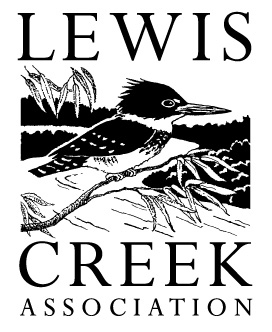Aquatic invasive plant species (AIS) have long threatened the health and populations of native plants in the Lewis Creek watershed. By forming dense mats of vegetation, AIS impede the activities of recreational boaters, swimmers, and anglers, while degrading ecosystems and wildlife habitats. Aquatic and riparian environments are fragile and sensitive to change. The health of these places is essential to the health of surrounding plants and animals. Terrestrial non-native invasive plants also create hazards by altering erosion patterns, out-competing native species, and impacting water quality. Management of all invasive species can be difficult because they are easily spread via seeds, roots, fragments, animals, and by humans.
Bristol Pond and Monkton Pond, popular destinations for anglers, recreational boaters, and wildlife enthusiasts, both contain AIS. As of 2024, there were three known aquatic invasive species in Bristol Pond: European Frogbit, Eurasian Watermilfoil, and Brittle Naiad, and four aquatic invasive species in Monkton Pond: Eurasian Watermilfoil, Curly-leaf Pondweed, Banded Mystery Snail, and Chinese Mystery Snail. If left unmanaged, the AIS in these ponds will spread throughout the rest of the watershed and the state. To prevent further spread, Lewis Creek Association (LCA), a local non-profit watershed group, will be launching their sixth summer of the Boat Launch Steward Program at Bristol and Monkton Ponds beginning in June.
LCA’s Boat Launch Steward Program, funded by a grant from the Lake Champlain Basin Program (LCBP) and NEIWPCC, was created to teach the public about AIS concerns within the Lewis Creek watershed. At Bristol and Monkton Ponds, the boat launch stewards greet boaters as they arrive at the ponds and offer to inspect their boats for aquatic invasive species, while also collecting data on where the boat has been and how many aquatic organisms they encountered. They inform boat owners on how to prevent the spread of AIS, which includes cleaning, draining, and drying your boat (and other equipment that has been in the water!) before moving to a different water body. This could include swimsuits and life jackets, which could carry small, microscopic organisms like the fishhook waterflea, which was recently found in Lake Champlain.
In addition to staffing the ponds on the weekends, the stewards will also take on the task of manually removing Japanese knotweed at two sites along Lewis Creek (one in North Ferrisburgh, and one in Starksboro). Japanese knotweed is a particularly tough plant to remove; it spreads primarily by its roots/rhizomes, which can break off during a flood then resprout and form a new colony downstream.
Mike Bald (Got Weeds?) discusses manual knotweed removal techniques with Program Manager, Kate Kelly, and LCA’s knotweed technicians along Lewis Creek. Photo credit: Sara Lovitz
The distribution of knotweed in the Lewis Creek watershed is patchy and it has not yet spread prevalently across streambanks (unlike in many other Vermont watersheds where it covers nearly every square foot available). LCA is excited to demonstrate a non-chemical removal method to the public at these two sites, where stewards will be present weekly to lead removal efforts, and to occasionally display these methods to the public. Everyone is invited to help if they wish! LCA is partnering with Mike Bald (Got Weeds?) to guide this work and demonstrate effective methods for knotweed removal without herbicides – it can be done! You can also get involved in a project that uses community science to help us understand the distribution of knotweed in the watershed using iNaturalist. Using the iNaturalist app, you can photograph and identify invasive (or native) plants, and post your findings so other users can corroborate the plants’ identity. This creates a map of observations that we can use to understand where Japanese knotweed is found in the watershed. LCA would love to have your involvement in one or both portions of the project. If you’re interested in learning more, sign up at https://bit.ly/lca-knotweed or reach out to Kate Kelly, Program Manager for Lewis Creek Association, at kate@lewiscreek.org or 488-5203.
Since 2020, LCA’s boat launch stewards have been the first line of defense against invasive species within the Lewis Creek watershed. At Bristol and Monkton Ponds, stewards have interacted with over 2,250 boats, and intercepted 493 boats that had aquatic plants on them. They informed many more members of the community about the threat and spread of AIS at Bristol and Monkton Ponds. While conducting their duties, the boat launch stewards directly prevented potential AIS infestations to other waterbodies and may have indirectly prevented hundreds of AIS infestations by educating the public. Next time you are out at Bristol Pond or Monkton Pond, say hi to LCA’s boat launch stewards! They will gladly discuss any topics regarding AIS, and show you how you can help prevent the spread of AIS.
This project has been funded wholly or in part by the United States Environmental Protection Agency under Assistance Agreement (LC00A01526) to NEIWPCC in partnership with the Lake Champlain Basin Program.



